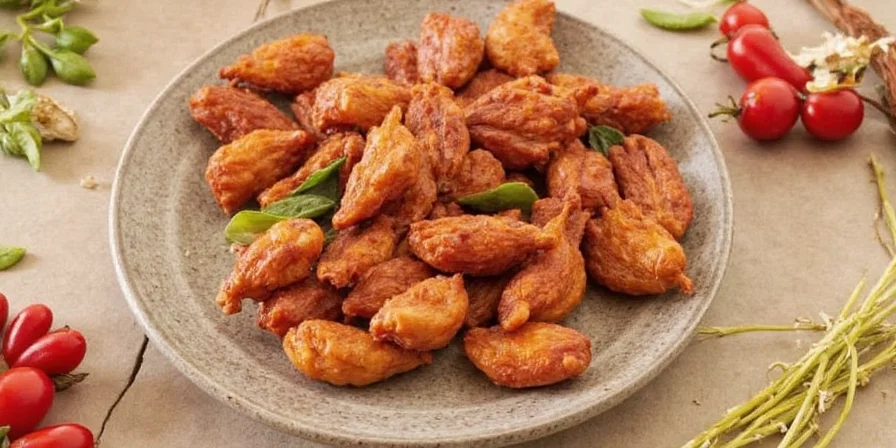5 Unexpected Truths About Mexican Spices That Will Spice Up Your Life (Literally!) 🌶️
Mexican spices—those fiery, smoky, and aromatic powerhouses—are more than just chili powder in a jar. From the earthy warmth of cumin to the floral punch of epazote, these spices define the soul of Mexican cuisine. But there's more to them than meets the tongue! In this article, we'll uncover five surprising truths about Mexican spices that’ll turn your kitchen into a fiesta zone.
Table of Contents
- Truth #1: Not All Mexican Spices Are Hot!
- Truth #2: Mexico’s Regional Spice Game Is Strong
- Truth #3: Some Spices Have Been Used for Thousands of Years
- Truth #4: Mexican Spices Can Boost Your Mood (and Health)
- Truth #5: You Might Be Using ‘Mexican’ Spices Wrong
Truth #1: Not All Mexican Spices Are Hot!
When you hear “Mexican spice,” the first thing that comes to mind is probably heat. After all, jalapeños, habaneros, and ghost peppers have earned their spicy reputation. But not all spices from Mexico are about fire—they’re also about flavor, aroma, and balance.

Case in point: Epazote has an almost medicinal, minty aroma with hints of citrus. It’s commonly used in black bean dishes to add depth and even reduce gas formation (yes, really!). Cilantro brings fresh brightness, while cinnamon adds sweet warmth.
Spice Heat Level Comparison
| Spice | Flavor Profile | Scoville Units (Heat) |
|---|---|---|
| Cumin | Earthy, Nutty | 0 SHU |
| Epazote | Minty, Medicinal | 0 SHU |
| Guajillo Chili | Smoky, Tangy | 2,500–5,000 SHU |
| Habanero Powder | Fruity, Fiery | 100,000–350,000 SHU |
Pro Tip:
- Try using a pinch of ground coriander or Mexican oregano in place of standard Italian oregano for a fresher, woodsy twist.
Truth #2: Mexico’s Regional Spice Game Is Strong
Mexico is a massive country with wildly different climates, cultures, and cuisines. And that means its spice game varies drastically from region to region.

In **Oaxaca**, mole sauces call for unique combinations like almonds, cloves, and sesame seeds. The famous mole negro uses pasilla, ancho, and mulato chilies blended with chocolate, creating one of the most complex spice profiles on Earth.
In the **Yucatán**, you’ll find achiote, a vibrant red seed used to make the legendary recado rojo. Paired with sour orange juice and habanero, it creates the base for cochinita pibil, a slow-roasted pork dish with deep Mayan roots.
Regional Spice Profiles
| Region | Signature Spice(s) | Signature Dish |
|---|---|---|
| Oaxaca | Mulato, Ancho, Clove, Sesame | Mole Negro |
| Yucatán | Achiote, Citrus, Habanero | Cochinita Pibil |
| Jalisco | Garlic, Oregano, Chile de Árbol | Birria Tacos |
Pro Tip:
- If you're cooking something inspired by Oaxacan mole, skip the supermarket chili powder and opt for a mix of dried chilies like ancho, mulato, and guajillo.
Truth #3: Some Spices Have Been Used for Thousands of Years
Mexican spices aren’t just trendy additions to your tacos—they’ve been around since ancient times. Indigenous peoples like the Aztecs and Mayans were master spice users long before Europeans arrived.

Did you know? Vanilla, which originated in Mexico, was used by the Totonacs as early as 1000 BCE. The Aztecs combined it with cacao to make a luxurious spiced beverage they called xocoatl.
Other examples include:
- Chia Seeds: Valued for energy and nutrition.
- Anise Seed: Used medicinally and culinarily.
- Chili Peppers: Domesticated over 6,000 years ago in Central Mexico.
Historical Spice Timeline
- 6000 BCE – Chili peppers domesticated
- 1000 BCE – Vanilla cultivation begins
- 1300 CE – Aztecs use cacao + vanilla + chili in rituals
- 1519 CE – Cortés introduces vanilla to Europe
Pro Tip:
- Add a few drops of pure Mexican vanilla extract to your coffee for a rich, spiced kick.
Truth #4: Mexican Spices Can Boost Your Mood (and Health)
It turns out, eating spicy food isn’t just delicious—it can actually make you happier. Capsaicin, the compound responsible for the burn in chili peppers, triggers endorphins and dopamine release. That’s why people often say spicy food gives them a natural high.

But beyond the mood boost, many Mexican spices offer serious health benefits:
- Cumin: Helps digestion and blood sugar regulation.
- Cinnamon: Anti-inflammatory and antioxidant-rich.
- Coriander: Rich in minerals and detoxifying properties.
Nutritional Benefits of Common Mexican Spices
| Spice | Key Benefit | How to Use |
|---|---|---|
| Cumin | Improves digestion | In salsas, stews, and taco meat |
| Cinnamon | Blood sugar regulation | In mole, desserts, or coffee |
| Epazote | Reduces gas in beans | Simmered in bean pots |
Pro Tip:
- Grind your own spices whenever possible—it enhances flavor and retains potency.
Truth #5: You Might Be Using ‘Mexican’ Spices Wrong
We’ve all done it: grabbed a bottle labeled “Mexican chili powder” off the shelf and sprinkled it onto our enchiladas without a second thought. But here’s the kicker—authentic Mexican spice blends don’t usually look like that.

In Mexico, spices are often used whole, toasted, and then ground fresh. The difference is night and day compared to pre-mixed powders. Plus, many store-bought “Mexican” spice blends are made for American-style Tex-Mex, not traditional Mexican dishes.
Common Mistakes & How to Fix Them
- Mistake: Using generic chili powder for authentic dishes
Fix: Try making your own blend using dried guajillos, anchos, and a touch of cumin - Mistake: Cooking spices straight from the bottle
Fix: Toast whole spices in a dry pan first to unlock deeper flavors - Mistake: Storing spices in bright kitchens
Fix: Keep them in cool, dark places to preserve potency
Pro Tip:
- Toast your dried chilies before grinding—they release a smoky depth you won’t get otherwise.
Conclusion
Mexican spices are more than just ingredients—they’re history, culture, and flavor packed into tiny packages. Whether you're simmering a pot of mole, marinating meats with recado rojo, or simply spicing up your morning oatmeal, understanding the truth behind these spices will take your cooking (and appreciation) to the next level.
So go ahead, grab some achiote paste, toast a few whole chilies, and let your kitchen smell like a mercado in Mérida. Because now you know: real Mexican spice magic lies in variety, tradition, and knowing when to dial up—or down—the heat.

And remember, folks: when it comes to spice, sometimes the truth is hotter than habanero dust.











 浙公网安备
33010002000092号
浙公网安备
33010002000092号 浙B2-20120091-4
浙B2-20120091-4